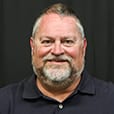
MOORESVILLE, N.C. — The racing season has begun, though, in a far different manner than any of us could have imagined four months ago. It’s a world with rolling schedules that can be changed as dictated by the conditions of the COVID-19 pandemic.
On March 1, it would have been unthinkable to imagine empty speedways, or tracks with severely limited on-site spectator attendance. Or to see the competitors wearing face masks to protect their health and safety.
In addition, midweek races seemed like a future talking point for NASCAR, or any other top series. After all, what kind of crowd could a racing venue hope to gather by racing on a Wednesday evening?
We would have never envisioned the participants of a racing series gathering in the pre-dawn hours for medical screening before flying on a charter plane to Texas Motor Speedway to conduct practice, qualifications and a race — all on the same day. Then, boarding that charter and flying home, all within a 24-hour period.
That is what the NTT IndyCar Series did on June 6 in order to start its season at Texas Motor Speedway.
NASCAR has made even more modifications to its schedule, scrapping practice and qualifications and lining the cars on the grid by blind draw. This has scrambled the field and actually made the racing even more entertaining than it was before.
Who needs practice when NASCAR can put on a better race without it?
Every racing series has had to make major adjustments to its schedules and procedures just to hold races this year. The NASCAR Cup Series was among the first to race with an empty grandstand on May 17 at Darlington (S.C.) Raceway. Another Cup Series race was held at Darlington a few days later followed by the annual Coca-Cola 600 at Charlotte Motor Speedway and another Cup Series race the following Wednesday at the 1.5-mile superspeedway.
It wasn’t until after that point that NASCAR announced its schedule for June and July, including daytime races at such summer sweltering locations as Homestead, Fla., in June and Texas Motor Speedway in July.
IndyCar revised its schedule several times with the 104th Indianapolis 500 slated for Aug. 23. If it can’t be held then, IndyCar and Indianapolis Motor Speedway owner Roger Penske said it will be run in October.
Penske also made it quite clear that the 104th Indianapolis 500 will be held with fans. He has no interest in conducting the world’s biggest race against the backdrop of an empty Indianapolis Motor Speedway.
Unusual times call for unusual measures and that is why NASCAR and IndyCar can weather this health crisis better than other racing series, such as Formula One. NASCAR owns and controls many of the venues on the Cup Series schedule and can easily shift race dates.
Penske owns the biggest race on the IndyCar schedule, the Indianapolis 500 at Indianapolis Motor Speedway. That facility can host extra races, such as the October Harvest Grand Prix, in order to keep a double-digit number of races on the schedule.
The tracks and venues that won’t be able to host IndyCar contests in 2020 because of local government concerns will be back in 2021. Those include Richmond (Va.) Raceway and the Honda Indy Toronto, both of which had their races canceled.
IndyCar officials wisely shifted the late June Road America date into July and turned it into a doubleheader. The following week, Iowa Speedway will host another doubleheader.
IndyCar had hoped to stage the July 4 GMR IndyCar Grand Prix at Indianapolis Motor Speedway in front of spectators, but in early June, Penske and IMS officials announced the COVID numbers in Marion County, Ind., wouldn’t allow the area to move into the next phase of the state’s reopening plan.
The decision was made to stage that race and the two NASCAR contests that make up Brickyard 400 weekend without fans.
Penske explained that running without fans actually improves the track’s chances of staging the Indianapolis 500 with spectators. If a COVID-19 outbreak occurred due to spectators attending the Brickyard, it would all but spell doom to for the plan to stage the Indy 500 with spectators.
There remain other questions regarding this year’s schedule and that is why it will probably change a few more times before the season is finally concluded. As of now, the final IndyCar race is scheduled to be the Oct. 25 Firestone Grand Prix of St. Petersburg.
That is where the season was supposed to start on March 15 before the event was called off on March 13 because of COVID-19.
A decade’s worth of uncertainty and change have followed.
When this issue of SPEED SPORT arrives in mid-July, even more changes will have been made. Such will be the story of this season.
